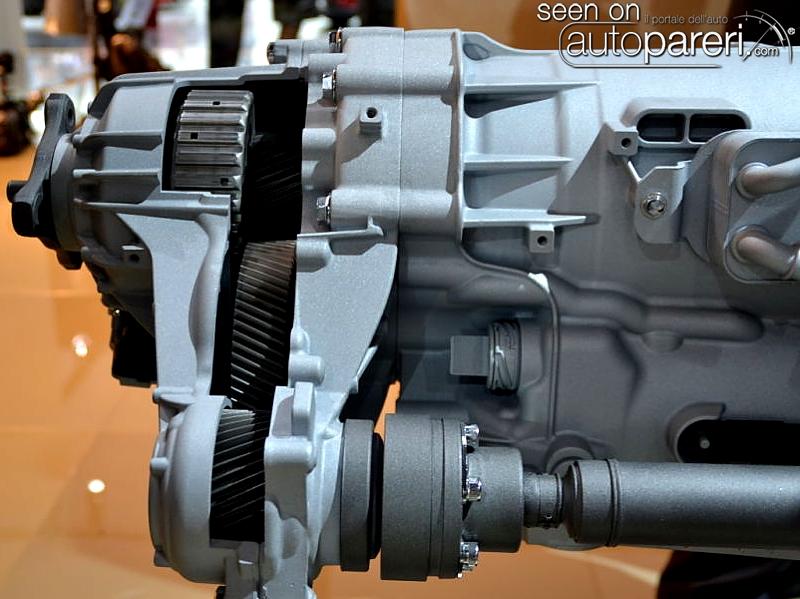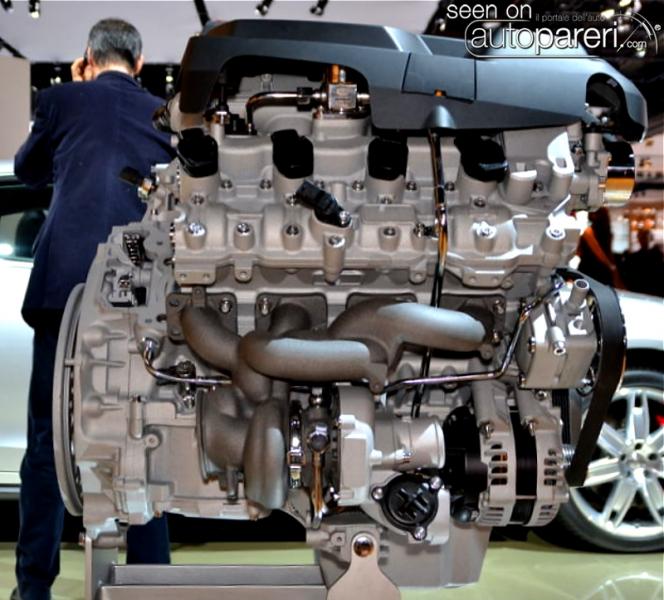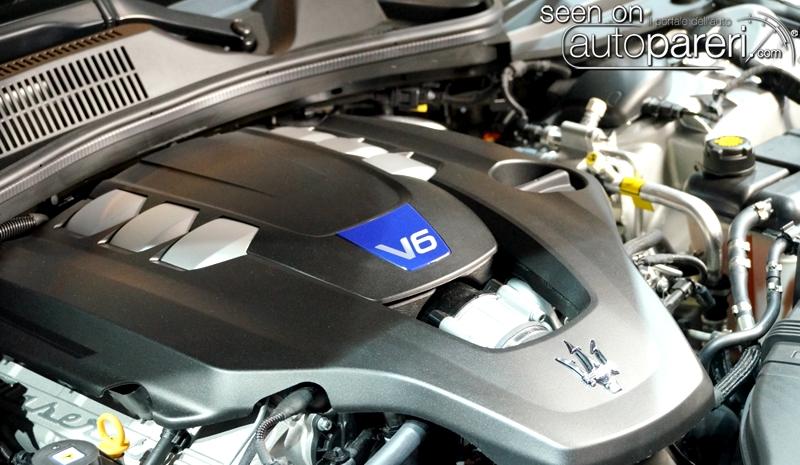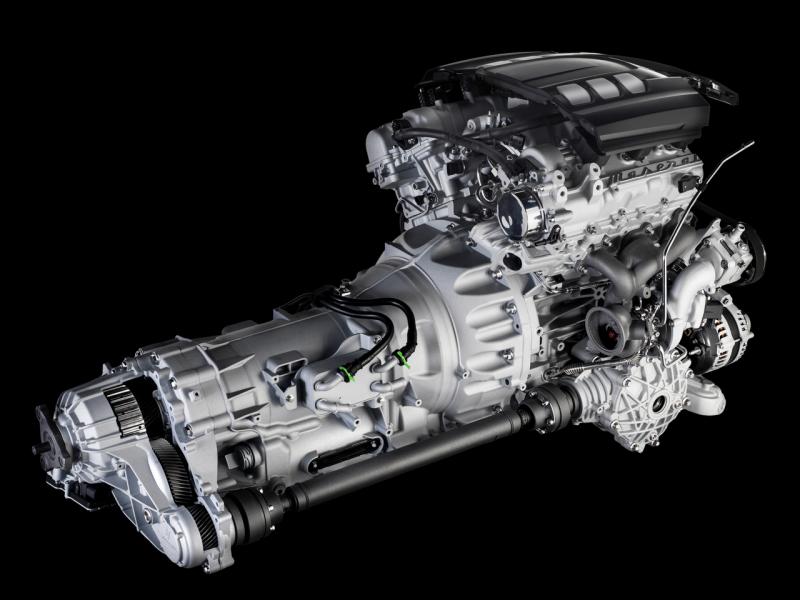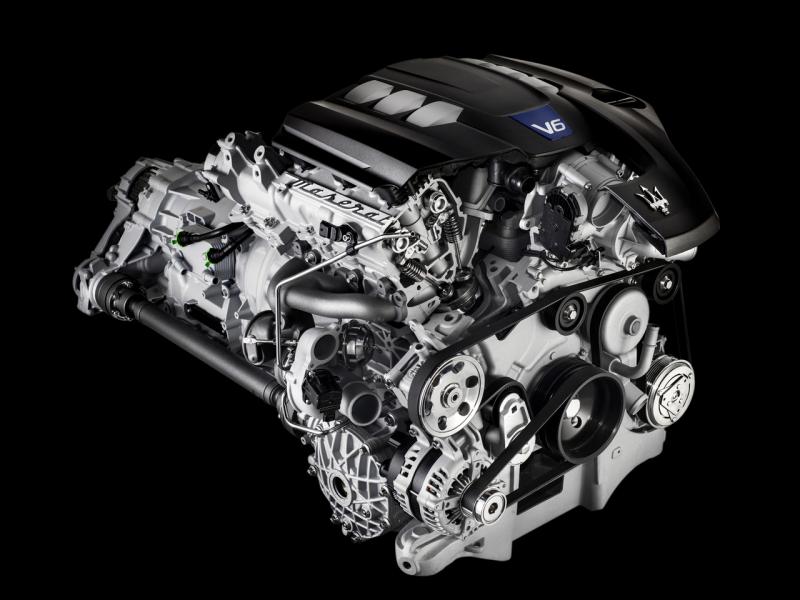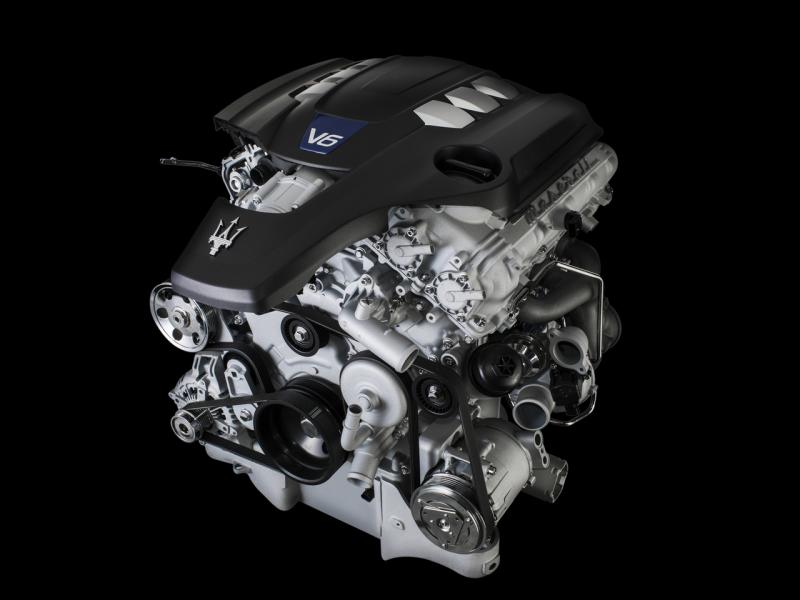Cerca nel Forum
Mostra i risultati del/dei TAG ''maserati quattroporte 2013'' .
Trovato 5 risultati
-
Quattroporte GranLusso Quattroporte GranSport Press release: MASERATI Giornata di facelift oggi...ecco la rinnovata Quattroporte. Due nuovi pack, GranLusso e GranSport (disponibili su tutte le versioni) caratterizzate da diversi paraurti esterni e diverse finiture degli interni. Debuttano inoltre il nuovo schermo touch da 8,4'' e numerosi sistemi di sicurezza attiva, mutuati dal Levante, come ad esempio l'ACC, la frenata assistita, la frenata d'emergenza e la telecamera perimetrale.
- 224 risposte
-
- 3
-

-
- sondaggio
- auto in arrivo
-
(e 17 altri in più)
Taggato come:
- sondaggio
- auto in arrivo
- novità auto
- nuove auto
- novità auto 2016
- topic ufficiale
- presentazioni auto
- foto nuove auto
- ufficiale
- maserati quattroporte facelift 2016
- quattroporte facelift 2016
- maserati
- maserati ufficiale
- maserati quattroporte
- quattroporte
- facelift
- maserati quattroporte 2013
- m156
- maserati m156
-
Messaggio Aggiornato il 13/06/2016 Sostituita dal modello ristilizzato: Maserati Quattroporte Facelift 2016 Vedi confronto con le antenate Sound 3.8 V8 by Quattroruote Altre immagini LIVE: Messaggio #797 - Messaggio #799 Ø/AAAAAAAKpds/2nhgT2e9kIY/s1600/Maserati-Quattroporte-VI-59%25255B2%25255D.jpg'> es.autoblog - carscoop The all new Maserati Quattroporte Press Release : Maserati Cartella Stampa completa: netcarshow.com Prezzi:
- 1474 risposte
-
- m156 (nuova quattroporte)
- maserati
- (e 9 altri in più)
-
Messaggio Aggiornato al 01/12/2015 WCF Press Release: Maserati Prezzo: ----- Piccoli updates per la GTS, tra cui le parti inferiori di paraurti e minigonne in tinta carrozzeria e Tridente con tocchi di rosso sia nella calandra che nei cerchioni. Per tutte le Quattroporte adesso sono disponibili cuciture dei sedili a contrasto, dettagli in pelle rossa, inserti Piano Black e hotspot Wi-Fi. Anche la Ghibli ottiene qualche up, tra cui bluetooth e gps standard e nuovi colori per le pinze dei freni.
- 62 risposte
-
- maserati
- maserati quattroporte
- (e 3 altri in più)
-

Maserati Quattroporte Ermenegildo Zegna Limited Edition Concept (Foto Ufficiali)
nella discussione ha aggiunto Touareg 2.5 in Presentazioni Nuovi Modelli
WCF Press Release : Maserati Collabo tra Maserati ed Ermenegildo Zegna per questa Show Car che verrà presentata a Francoforte; l'anno prossimo la versione di serie. Perché chiamarla Limited Edition se viene presentata come concept?! Son riusciti a creare un nome più lungo di una delle qualsiasi edizioni speciali della Gallardo . Ma Pandino che fine ha fatto?- 60 risposte
-
- ermenegildo zegna
- francoforte
- (e 6 altri in più)
-
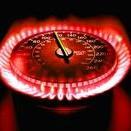
Maserati - V6 e V8 Bi-Turbo ID e nuova 4x4 by Magna-Steyr
nella discussione ha aggiunto J-Gian in Innovazione Meccanica
Messaggio Aggiornato il 20/03/2013 In realtà non ho ancora trovato dettagli approfonditi, ma apro la discussione come si usa fare con le novità di prodotto... Tornerà utile nel tempo [TABLE] [TR] [TD=class: ficha ficha_izq]Motore[/TD] [TD=class: ficha ficha_central]3.8 V8 DI Bi-Turbo [/TD] [TD=class: ficha ficha_central]3.0 V6 DI Bi-Turbo[/TD] [/TR] [TR] [TD=class: ficha ficha_izq]Frazionamento[/TD] [TD=class: ficha ficha_central]8 cilindri a V - 90° angolo di bancata[/TD] [TD=class: ficha ficha_central]6 cilindri a V - 60° angolo di bancata[/TD] [/TR] [TR] [TD=class: ficha ficha_izq]Potenza massima[/TD] [TD=class: ficha ficha_central]530 CV a 6.800 giri[/TD] [TD=class: ficha ficha_central]410 CV a 5.500 giri[/TD] [/TR] [TR] [TD=class: ficha ficha_izq]Coppia massima[/TD] [TD=class: ficha ficha_central]710 Nm tra i 2.250-3.500 giri[/TD] [TD=class: ficha ficha_central]550 Nm tra i 1.500-5.000 giri[/TD] [/TR] [TR] [TD=class: ficha ficha_izq]Cilindrata[/TD] [TD=class: ficha ficha_central]3799 cm3[/TD] [TD=class: ficha ficha_central]2.979 cm3[/TD] [/TR] [TR] [TD=class: ficha ficha_izq]Alesaggio x corsa[/TD] [TD=class: ficha ficha_central]86,5 x 80,8 mm[/TD] [TD=class: ficha ficha_central]86,5 x 84,5 mm[/TD] [/TR] [TR] [TD=class: ficha ficha_izq]Rapporto di compressione[/TD] [TD=class: ficha ficha_central]9,5:1[/TD] [TD=class: ficha ficha_central]9,7:1[/TD] [/TR] [TR] [TD=class: ficha ficha_izq]Distribuzione[/TD] [TD=class: ficha ficha_central] 4 valvole per cilindro Doppio albero a camme per testa Doppio variatore di fase Comando valvola a rullino[/TD] [TD=class: ficha ficha_central]4 valvole per cilindro Doppio albero a camme per testa Doppio variatore di fase Comando valvola a rullino[/TD] [/TR] [TR] [TD=class: ficha ficha_izq]Alimentazione[/TD] [TD=class: ficha ficha_central] Iniezione diretta Doppio Turbo compressore IHI (1 per bancata) Condotti turbo/chiocciola monoblocco (4->1) Intercooler[/TD] [TD=class: ficha ficha_central]Iniezione diretta Doppio Turbo compressore IHI (1 per bancata) Condotti turbo/chiocciola monoblocco (3->1) Intercooler[/TD] [/TR] [TR] [TD=class: ficha ficha_izq]Materiale basamento / testa[/TD] [TD=class: ficha ficha_central]Alluminio / Alluminio[/TD] [TD=class: ficha ficha_central]Alluminio / Alluminio[/TD] [/TR] [TR] [TD=class: ficha ficha_izq][/TD] [TD=class: ficha ficha_central][/TD] [TD=class: ficha ficha_central][/TD] [/TR] [TR] [TD=class: ficha ficha_izq][/TD] [TD=class: ficha ficha_central][/TD] [TD=class: ficha ficha_central][/TD] [/TR] [TR] [TD=class: ficha ficha_izq]Trasmissione [/TD] [TD=class: ficha ficha_central]Cambio automatico ZF AT8-HP70 [/TD] [TD=class: ficha ficha_central]Cambio automatico ZF AT8-HP70 [/TD] [/TR] [TR] [TD=class: ficha ficha_izq]Tipologia[/TD] [TD=class: ficha ficha_central]Convertitore di coppia Blocco convertitore a frizioni multiple[/TD] [TD=class: ficha ficha_central]Convertitore di coppia Blocco convertitore a frizioni multiple[/TD] [/TR] [TR] [TD=class: ficha ficha_izq]Rapporti (km/h a 1.000 rpm)[/TD] [TD=class: ficha ficha_central]1ª - 9,4[/TD] [TD=class: ficha ficha_central]n.d.[/TD] [/TR] [TR] [TD=class: ficha ficha_izq][/TD] [TD=class: ficha ficha_central]2ª - 14,1[/TD] [TD=class: ficha ficha_central]n.d.[/TD] [/TR] [TR] [TD=class: ficha ficha_izq][/TD] [TD=class: ficha ficha_central]3ª - 20,9[/TD] [TD=class: ficha ficha_central]n.d.[/TD] [/TR] [TR] [TD=class: ficha ficha_izq][/TD] [TD=class: ficha ficha_central]4ª - 26,5[/TD] [TD=class: ficha ficha_central]n.d.[/TD] [/TR] [TR] [TD=class: ficha ficha_izq][/TD] [TD=class: ficha ficha_central]5ª - 35,5[/TD] [TD=class: ficha ficha_central]n.d.[/TD] [/TR] [TR] [TD=class: ficha ficha_izq][/TD] [TD=class: ficha ficha_central]6ª - 44,2[/TD] [TD=class: ficha ficha_central]n.d.[/TD] [/TR] [TR] [TD=class: ficha ficha_izq][/TD] [TD=class: ficha ficha_central]7ª - 52,6[/TD] [TD=class: ficha ficha_central]n.d.[/TD] [/TR] [TR] [TD=class: ficha ficha_izq][/TD] [TD=class: ficha ficha_central]8ª - 66,0[/TD] [TD=class: ficha ficha_central]n.d.[/TD] [/TR] [TR] [TD=class: ficha ficha_izq][/TD] [TD=class: ficha ficha_central]R - 13,3[/TD] [TD=class: ficha ficha_central]n.d.[/TD] [/TR] [/TABLE] 3.8 V8 DI Bi-Turbo - Sound 3.8 V8 by Quattroruote V8 TWIN TURBO ENGINE AND PERFORMANCE The flagship 3.8-litre V8 engine is a perfect representation of Maserati's performance tradition combined with a 20% reduction in emissions. It is almost a litre smaller in capacity than the 4.7-litre V8 in the Quattroporte Sport GT S, yet this is more than countered through twin turbo charging and direct fuel injection to deliver 18% more power and 39% more torque. The engine produces 390 kW (530 hp) of power at 6800 rpm and accompanies this with 650 Nm of torque from 2000 rpm to 4000 rpm. This maximum normal torque figure can be overboosted to 710 Nm from 2250 rpm to 3500 rpm. These figures represent the highest specific power output in the class, with 139 hp/l, and the best specific torque as well, with 171 Nm per litre. It also has a considerably more powerful engine than the finely balanced 4.7-litre engine in the Maserati Quattroporte Sport GT S, with a full 59 kW (80 hp) more power and an astonishing 200 Nm more torque (on the overboosted output). The torque peak also arrives at less than half the engine speed of the Sport GT S's V8, too, peaking at 2000 rpm versus 4750 rpm. In addition, its combination of a lighter body design and a stronger engine give the Quattroporte the best power-to-weight ratio in class, with just 3.6 kg for each horsepower. These engine figures help the Quattroporte reach 100 km/h in just 4.7 seconds, which is 0.3 seconds faster than the previous Sport GT S, making the new Quattroporte the fastest accelerating four-door car in Maserati's history. This also makes it 0.6 seconds faster to 100 km/h than the outgoing Maserati Quattroporte S and almost a second faster than the 4.2-litre Quattroporte. Another ground-breaking figure is the Quattroporte's top speed, comfortably breaking through the 300km/h barrier to reach 307 km/h (191 mph). Again, this makes it the fastest four-door Maserati in history and second amongst all Maserati production cars behind the mighty V12-powered MC12. However, the new engine is not just about big performance numbers or high torque. Maserati engines have always been known for their incredible throttle response and that unique Maserati sound - and this engine is no different. The new engine generation's smaller capacity does help with the Quattroporte's handling too, but Maserati's engineers concentrated mainly on delivering the brand's traditional crisp pickup and low rotational inertia. The most technically advanced engine ever fitted to a Maserati, the 3799 cc V8, uses a pair of low-inertia, twin-scroll parallel turbos to increase its output. Its architecture retains the over-square, free-revving nature of the outgoing V8, with a bore of 86.5 mm and a stroke length of 80.8 mm, and it has a slightly lower compression ratio of 9.5:1. It has been specifically designed to deliver exceptional performance at all engine speeds, combined with lower consumption and emissions. The engine diagrams show that the V8 engine's torque is very high, even at speeds as low as 1500 rpm. It uses high-tumble cylinder heads with four cam phasers, (doubling the number of the naturally aspirated V8), in a concept refined by Maserati Powertrain for optimal combustion control to deliver high performance and low consumption. With hydraulically adjusted roller finger followers and two continuous cam phasers for each cylinder head, it can advance or retard the inlet and exhaust valve timing independently in real time and it also reduces friction losses compared to old valvetrain systems. Another characteristic feature of the new Maserati engine family is the 200 bar direct fuel-injection system. This very high pressure, coupled with seven holes laser drilled oriented holes injectors and multiple injection, helps atomising the fuel directly in the combustion chamber, thus improving the fuel-air mixture and the combustion process at any engine speed. The new V8 engine is boosted by two small parallel twin-scroll turbines, (one for each bank of four cylinders), which provide the high performance expected of a Maserati engine while reducing inertia. Maserati Powertrain focused on integrating the turbine housing into the exhaust manifold for a compact, light-weight solution. Each turbocharger is fed by its own air-to-air intercooler. The Quattroporte has two intercoolers, each mounted low and wide of the main radiators to catch a constant supply of fresh, cool air. The engine also uses a state-of-the-art ECU, with integral high-speed processors, which handle an array of shifting functions in real time. Maserati Powertrain has also switched to on-demand ancillaries, with a variable displacement oil pump that works under electrical control for improved consumption and performance. It also uses an innovative, computer-controlled alternator, which monitors the vehicle's electricity consumption and manages the alternator's workload to suit. The engine also operates in both Normal and Sport modes, along with Manual versions of either mode, operated by elongated shift paddles fixed to the steering column. The new Quattroporte also introduces the I.C.E. (Increased Control and Efficiency) strategy, a function aimed at reducing consumption, emissions and noise. It is a user-select strategy and delivers a softer throttle pedal response for smooth driving, cancels the turbocharger's overboost function and keeps the exhaust's Sport flaps closed until 5000 rpm. It also adjusts the gearshifts to make them softer and slower and reduces torque at each gear's take-up point. Besides delivering the Maserati Quattroporte's peak fuel efficiency figure, the I.C.E. mode is also very useful for driving on low-grip surfaces. 3.0 V6 DI Bi-Turbo V6 TWIN TURBO ENGINE AND PERFORMANCE The Quattroporte's all-new V6 twin turbo engine is a close relation of the V8, sharing most of its core components. With 301 kW (410 hp) of power at 5500 rpm, it still provides a tremendously powerful driving experience, especially with 550 Nm of flat torque between 1500 rpm and 5000 rpm. In Normal mode the torque is smoothed at 500Nm in the lower rpm range, reaching the 550 Nm threshold at 5000 rpm to guarantee the 301 KW of maximum power. The engine shares the V8's bore and combustion chamber design, the same valves control technology (i.e. roller finger followers and four cam phasers), the same twin turbocharging approach and direct injection-ignition system. The engine auxiliaries are identical (alternator, starter motor and power steering pump) or very similar (variable displacement oil pump). Nonetheless it has a character of its own, revving to a lower 6500 rpm maximum speed and delivering its torque level of 500 rpm sooner than the V8. While its specific power output is slightly lower than that of the V8, at 137 hp per litre, its specific torque is actually higher than the larger-engined car's standard specific torque, at 183 Nm per litre. It is also a lighter car, with 1860kg in its rear-wheel drive configuration (+70 kg in all-wheel drive). In rear-wheel drive mode, it accelerates to 100 km/h in 5.1 seconds, while the all-wheel drive V6 twin turbo manages the sprint in 4.9 seconds. Both cars are still as fast as people would expect from the Maserati brand, with the rear-wheel drive's 285 km/h (177 mph) top speed matching the outgoing Sport GT S and the all-wheel drive V6 twin turbo reaching 284 km/h (176 mph). The rear and all-wheel drive models are also very similar in their fuel consumption, with both cars posting 10.5 l/100 km on the combined cycle, with the rear-wheel drive car claiming 244 grams of CO2/km and the all-wheel drive 246 grams. EXHAUST SYSTEM In the best Maserati tradition, the sound and performance of the Quattroporte's exhaust system is controlled by pneumatic valves in the pipes of each bank in order to maintain the classic and rich sound characteristic of the brand. In the default Normal mode, the bypass valves are closed up to 4.200 rpm to give a comfortable and discreet engine sound. In Sport mode, not only does the car adjust a variety of handling parameters, but the exhaust valves are opened, giving the shortest possible high-energy route for the exhaust gases. This gives the Quattroporte its maximum engine performance and the unique Maserati engine sound. Beneath the rear bumper, the V8 version finishes its exhaust system with trapezoidal tips with two double pipes in polished steel. La trazione integrale utilizzata sul V6 viene prodotta da Magna-Steyr. Comporta un aggravio di 70kg. In 150 ms è in grado di ridistribuire la coppia dal 100% al posteriore a 50-50, simmetricamente sui 2 assi. Altre immagini (#111):- 127 risposte
-
- 3.0 v6 di bi-turbo
- 3.8 v8 di bi-turbo
- (e 5 altri in più)


